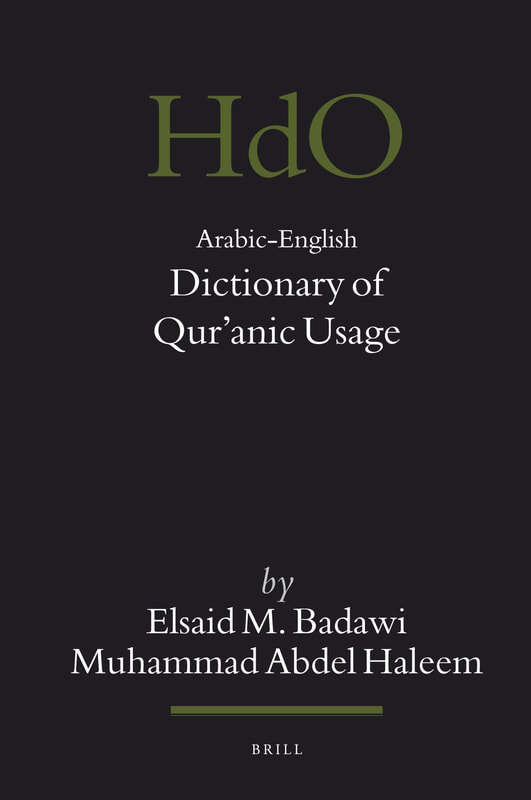Book Review: Elsaid M. Badawi and Muhammad Abdel Haleem: Arabic-English Dictionary of Qur’anic UsageThis eighty-fifth volume in Brill's Handbook of Oriental Studies Series attempts to fulfill the long-standing need for an Arabic-English dictionary of Qur'anic usage. Adding an important resource for the study of the Qur'an, the Dictionary is distinguished by many features: It brings to English-speaking readership contextualized interpretations of the Qur'anic vocabulary through the works of classical scholars; it follows the Arabic root system, devoting one section to each of the 28 letters of the Arabic alphabet; roots are alphabetically arranged with special attention given to the classification of roots with geminated second and third radicals, which are classified unlike the tradition followed by by Western lexicographers such as Lane and Wehr (thus the root s-b-b appears after the root s-b-' and not after it); cross references provide easy access to roots of certain foreign words which could be thought of as arising from more than one possible combination (e.g. A-z-r and a-z-r); an inventory of the basic concepts covered by the root provides a broad framework of what it encompasses; it recognizes that abstract derivatives in Arabic are derived from concrete ones, rather than the other way around (jamal, beauty, comes from jamal, camel, not the other way around); and it presents all morphological derivatives of a given root which are found in the Qur'an, along with their frequency.
|
|
© Center for Islamic Sciences. All Rights Reserved.
Designed and Developed by Crescent Marketing Solutions |


